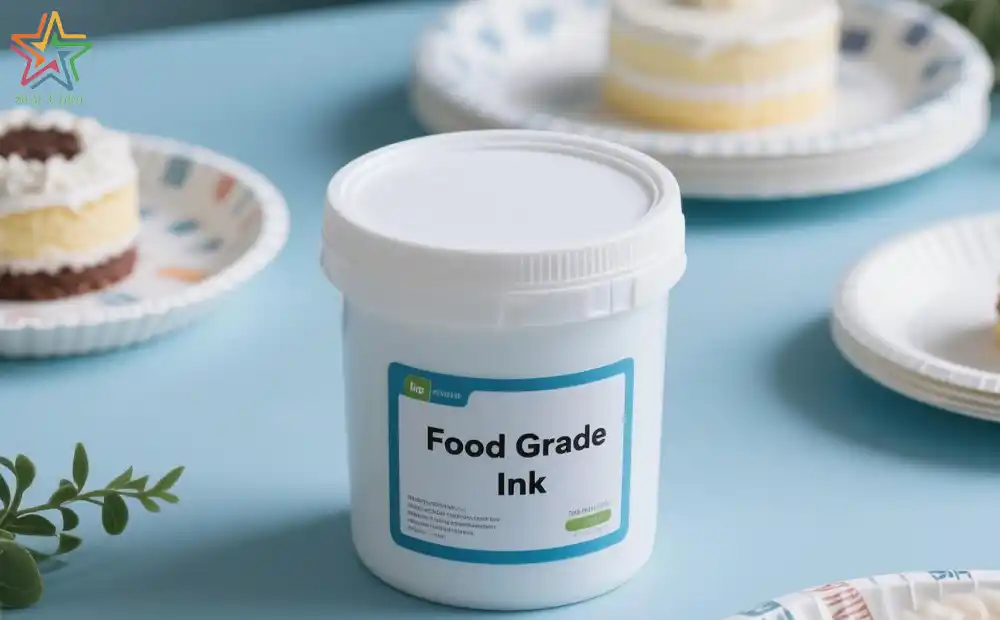Water-based vs. Solvent-based: How to Choose Food Packaging Inks?
Date: Apr 11 2025 From: Star Color Views:
In the field of food packaging, the decision between water-based and solvent-based inks is critical, impacting aspects such as product safety, environmental sustainability, printing quality, and cost-effectiveness. Below is a detailed comparison to help packaging and printing professionals make informed decisions.
1. Composition and Drying Mechanism
Water-based Inks
Water-based inks use water as the primary solvent, combined with pigments, resins, and various additives. The resins in these inks are typically water-soluble or water-dispersible. When applied to packaging materials, the water in the ink evaporates during the drying process, which can be accelerated by heat or forced air circulation.
Water-based inks generally dry slower than solvent-based inks, potentially requiring additional drying equipment on production lines or extended drying times. However, advancements in ink formulations and drying technology have significantly improved drying efficiency in recent years.
Solvent-based Inks
Solvent-based inks use organic solvents like toluene, xylene, or ethyl acetate as carriers for pigments and resins. These solvents have lower boiling points than water, enabling rapid evaporation. The drying process relies on the quick volatilization of solvents, allowing solvent-based inks to achieve faster drying times—ideal for high-speed printing operations. The resins in solvent-based inks dissolve well in organic solvents, ensuring excellent pigment dispersion and adhesion to a wide range of packaging materials.
| Index |
Water-based Inks |
Solvent-based Inks |
Testing Standard |
| Drying Speed |
3.2m/min (70℃ hot air) |
5.8m/min (room temperature) |
ASTM D6419 |
| Adhesion (PET film) |
4B (Cross-cut test) |
5B |
ISO 2409 |
| Freeze Resistance |
No cracking (200 cycles) |
Slight cracking (after 100 cycles) |
GB/T 4857 |
| VOC Emissions |
≤30g/L |
300-600g/L |
EPA Method 24 |
2. Environmental Impact
Water-based Inks
One of the most significant advantages of water-based inks is their environmental friendliness. Using water as the main solvent, they generate far fewer volatile organic compounds (VOCs) than solvent-based inks. VOCs are harmful air pollutants that contribute to smog and pose health risks such as respiratory issues. Water-based inks also have a lower carbon footprint due to reduced energy consumption during drying, especially compared to solvent-based inks that often require high-temperature drying. Additionally, they are generally more biodegradable, minimizing long-term environmental impact.
Solvent-based Inks
Solvent-based inks are known for high VOC emissions. The organic solvents are volatile and can be released into the atmosphere during printing and drying. Strict regulations in many countries limit VOC emissions from industrial activities like printing, increasing costs for solvent-based ink users who may need to invest in solvent recovery or emission control equipment. Disposal of solvent-based ink waste is also more challenging and costly due to its hazardous nature.

3. Printing Performance
Water-based Inks
Water-based inks have seen significant advancements in printing performance, now capable of high-quality prints with good color saturation and sharpness. However, they may face challenges on non-porous or low-surface-energy substrates (e.g., certain plastics), where poor wetting and adhesion can lead to uneven ink transfer. Slower drying times may also limit printing speeds in high-volume production, though new additives and surface treatment technologies are addressing these issues.
Solvent-based Inks
Solvent-based inks are renowned for their excellent performance on a wide range of substrates, including non-porous and low-surface-energy materials like plastics, metals, and foils. They offer superior wetting, adhesion, high-gloss finishes, and vibrant color intensity, making them ideal for eye-catching prints. Their fast drying allows high-speed printing, crucial for large-scale production. However, the high volatility of solvents can cause issues like solvent popping or premature drying on printing plates, requiring careful control of the printing environment and ink formulation.
4. Food Safety Considerations
Water-based Inks
Water-based inks are generally considered safer for food packaging due to their water-based formulation, reducing the risk of harmful chemical migration into food. Raw materials are typically selected to comply with strict food contact regulations, such as those set by the U.S. FDA and similar global authorities. However, ensuring ink formulations and manufacturing processes meet all safety standards is essential, as some additives or trace substances may still pose migration risks if not controlled.
Solvent-based Inks
Solvent-based inks carry a higher risk of chemical migration into food, especially if organic solvents are not fully evaporated during drying. Some solvents and additives in these inks may not be approved for food contact applications. Careful selection of food-grade solvent-based inks and strict regulatory compliance are necessary. In some cases, additional barrier layers or post-printing treatments may be required to minimize migration risks.
| Tested Substance |
Water-based Migration |
Solvent-based Migration |
FDA Limit |
| Total Benzene Derivatives |
ND (Not detected) |
0.08mg/dm² |
≤0.1mg/dm² |
| Plasticizer (DEHP) |
0.002ppm |
0.15ppm |
≤0.05ppm |
| Isopropanol Residue |
3.2mg/kg |
48.7mg/kg |
≤50mg/kg |
5. Cost-effectiveness
Water-based Inks
While water-based inks have a higher initial cost than solvent-based alternatives, they offer long-term cost advantages. Lower energy consumption for drying, reduced need for solvent recovery systems, and compliance with environmental regulations lead to significant savings over time. They also eliminate potential costs from environmental fines or expensive emission control measures. However, additional drying equipment or extended production times may offset savings in high-speed, high-volume settings.
Solvent-based Inks
Solvent-based inks are generally more affordable upfront, thanks to their wide use and simple formulations. However, costs escalate due to VOC emission control, solvent disposal, and potential non-compliance with environmental policies. In regions with strict regulations, expenses can surge due to investments in solvent recovery systems or emission reduction measures.
Conclusion
The choice between water-based and solvent-based inks for food packaging hinges on multiple factors. Water-based inks are the clear choice when environmental sustainability and food safety are priorities. Solvent-based inks remain preferable for applications requiring high-speed printing, excellent adhesion on diverse substrates, and high-gloss finishes. Packaging manufacturers should carefully evaluate their specific needs, production capabilities, and cost constraints to make the optimal decision.
 RU
RU
 EN
EN
 CN
CN

